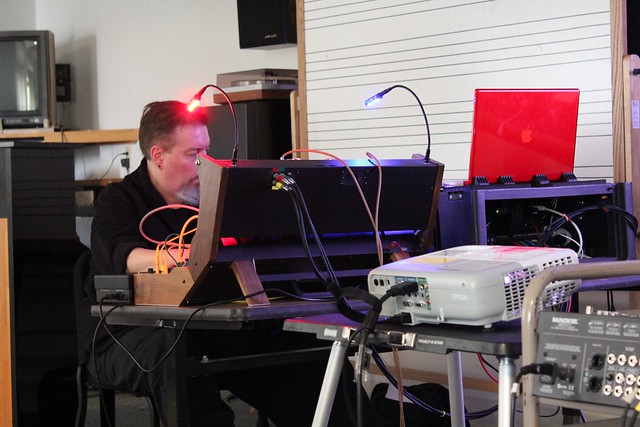 "KISS2012: real time, reel time, sound and Kyma
"KISS2012: real time, reel time, sound and KymaSound designers to converge on St Cloud Minnesota for over 24 hours of lecture/demonstrations, 9 hours of hands-on workshops, and 3 nights of live music, cinema and improvisation
CHAMPAIGN, ILLINOIS, June 26 - The fourth annual Kyma International Sound Symposium (KISS2012) - to take place September 13-16 at St Cloud State University School of the Arts in St Cloud, Minnesota - will include over 24 hours of technical sessions presented by Kyma experts, 9 hours of hands-on labs, and evenings filled with live music and live cinema showcasing some of the most outstanding work created in Kyma this year.
Since the inaugural symposium in Barcelona in 2009, KISS attendees around the world have benefited from the extensive technical training, aesthetic inspiration, and opportunities for collaboration that KISS is known to deliver. This year, more than 100 sound designers, composers, performers, filmmakers, game designers, authors, audio engineers, educators, and students are expected to participate in KISS2012.
"The dual nature of this year's theme - reel time || real time - has attracted an incredibly diverse group of people! It's just a great learning opportunity for everyone involved." - Scott Miller, professor of music composition at St Cloud State University School of the Arts and host of this year's KISS.
Throughout the four-day event, sound designers will be able to explore the latest innovations, features, and capabilities of the Kyma Sound Design Language and learn how to optimize their work flow so they can create amazing new sounds for film, games, music and more. Kyma practitioners are invited to bring their own Sounds to the labs where they can work with Kyma developers and fellow Kyma practitioners to enhance their results.
"One of our passions is to partner with Kyma users to help bring their creations to life. There is no better way to maximize your Kyma skills and discover new collaborative opportunities than by participating in the Kyma International Sound Symposium." - Carla Scaletti, president of Symbolic Sound Corporation, co-host of KISS2012.
If you are obsessed with sound - whether a novice seeking to kickstart your career, an expert looking to take your mastery to the next level, or someone who's simply curious about sound design and Kyma - KISS2012 is your chance to immerse yourself in sound and ideas for four intense and inspiring days and nights.
The deadline for discounted registration is August 10, 2012: http://bit.ly/J7URvC

[Photo Credit: Adam Studer]
Keynote speakers, expert presenters, and topics















































